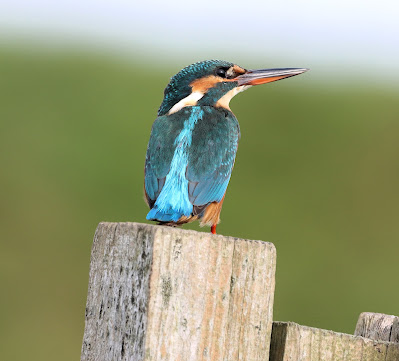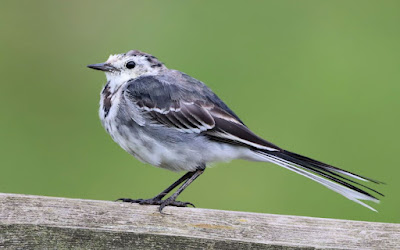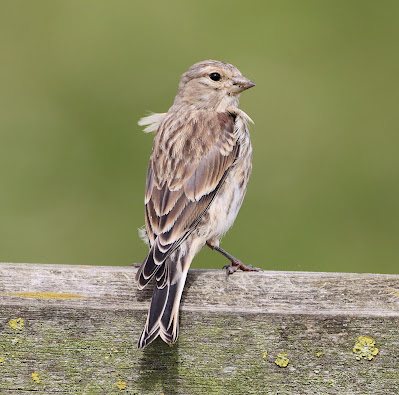Just a few days after returning from two weeks in sun-kissed Skiathos I had messages from Andy and Will. Unlike my sunshiny days of Greece they had struggled with gloomy, rainy Lancashire and managed only one or two ringing sessions.
On Saturday morning we met up out Pilling way to a bright start and 5mph breeze and set the usual nets plus one. The Plus One was to be important.
The morning began slowly and in a rather unexceptional way with half a dozen Long - tailed Tits and singles of the Blue and Great variety. “Things could only improve” we thought in unison. And they did with a final catch of 32 ringed and a couple or more superb sightings.
Ringed - 10 Linnet, 5 Goldfinch, 4 Greenfinch, 7 Long-tailed Tit, 1 Blue Tit, 1 Great Tit, 2 Wren, 1 Robin, 1 Kingfisher.
We quickly realised that a number of the Linnets coming from the seed plot had characteristics of the Scottish race of Linnet.
We have noted in past years that movements of Scottish birds beginning in September include slightly darker plumaged birds and also marginally longer winged individuals, often both characteristics in the same bird. The dark features of Scottish Linnets are very noticeable on the crown, around the ear coverts and on the back, especially so when when compared side to side with the “average” Lancashire individuals we see in the summer months.
" English" Linnet
"Scottish" Linnet
A couple of years ago and after discussion with experienced ringers from North of The Border we concluded that there is no Scottish sub-species but that the marked plumage and size variation in Linnets during our Lancashire winters is one of a gradual north to south clinal variation between two populations of Linnets.
Our 19 Goldfinch/Linnet/Greenfinch catch came mostly from the seed plot where the concentration of 150 - 200 finches attracted in turn a marauding Hobby and two Sparrowhawks.
When I travelled off on holiday Andy and Will were under strict instructions to catch the female Kingfisher I had photographed on 7 September. Of course the usual weather tricks put paid to that and other plans but this fine Saturday morning allowed the first opportunity.
A Kingfisher obliged in net Plus One but it wasn’t the individual from September 7, a female, but this one a male. It’s the old cautionary story of never assuming that the bird seen one minute is the same individual five minutes later. And we must never assume so where hours, days or weeks are involved.
Kingfisher - female
Other sighting came today via a Marsh Harrier, Cetti’s Warbler, 15 Little Egret, 20 or more Swallows, 50/60 Meadow Pipits, 25+ Skylarks.
Back soon with more tales news and photos on Another Bird Blog.
Linking this weekend to Eileen's Saturday.













.JPG)














.jpeg)

































.jpg)

















